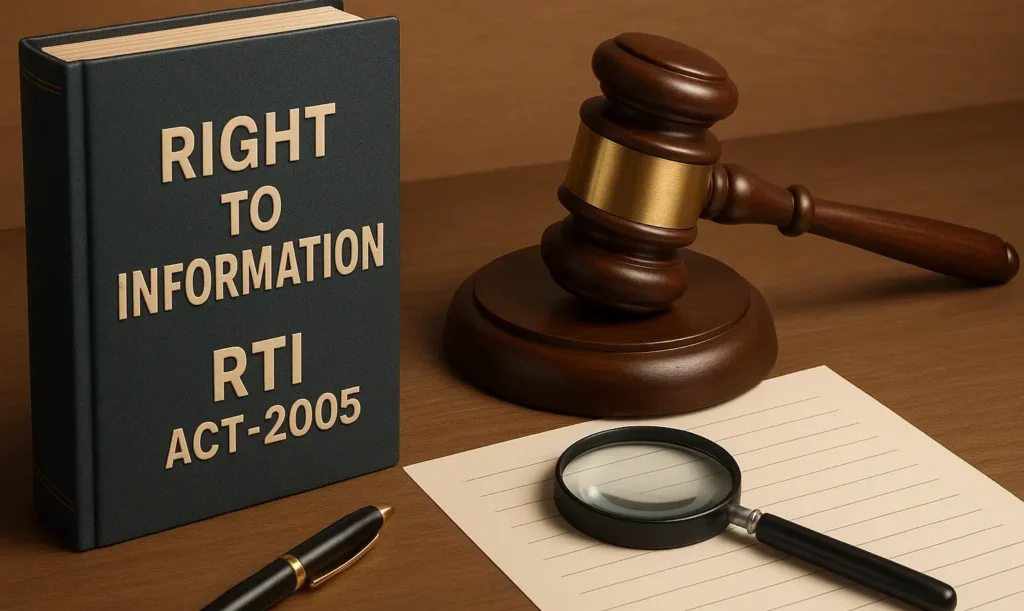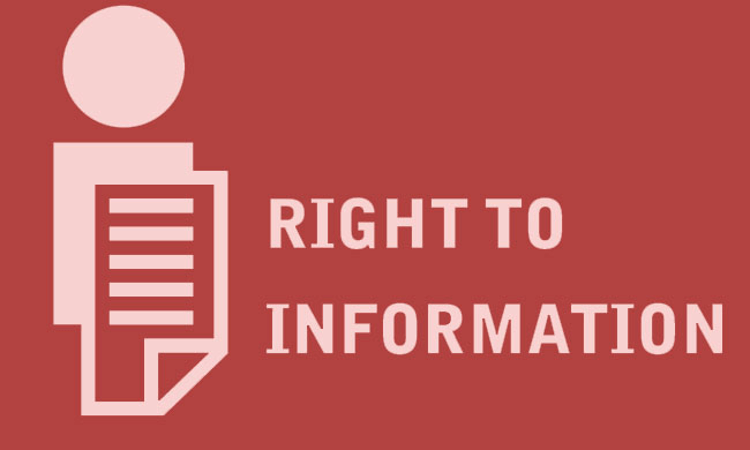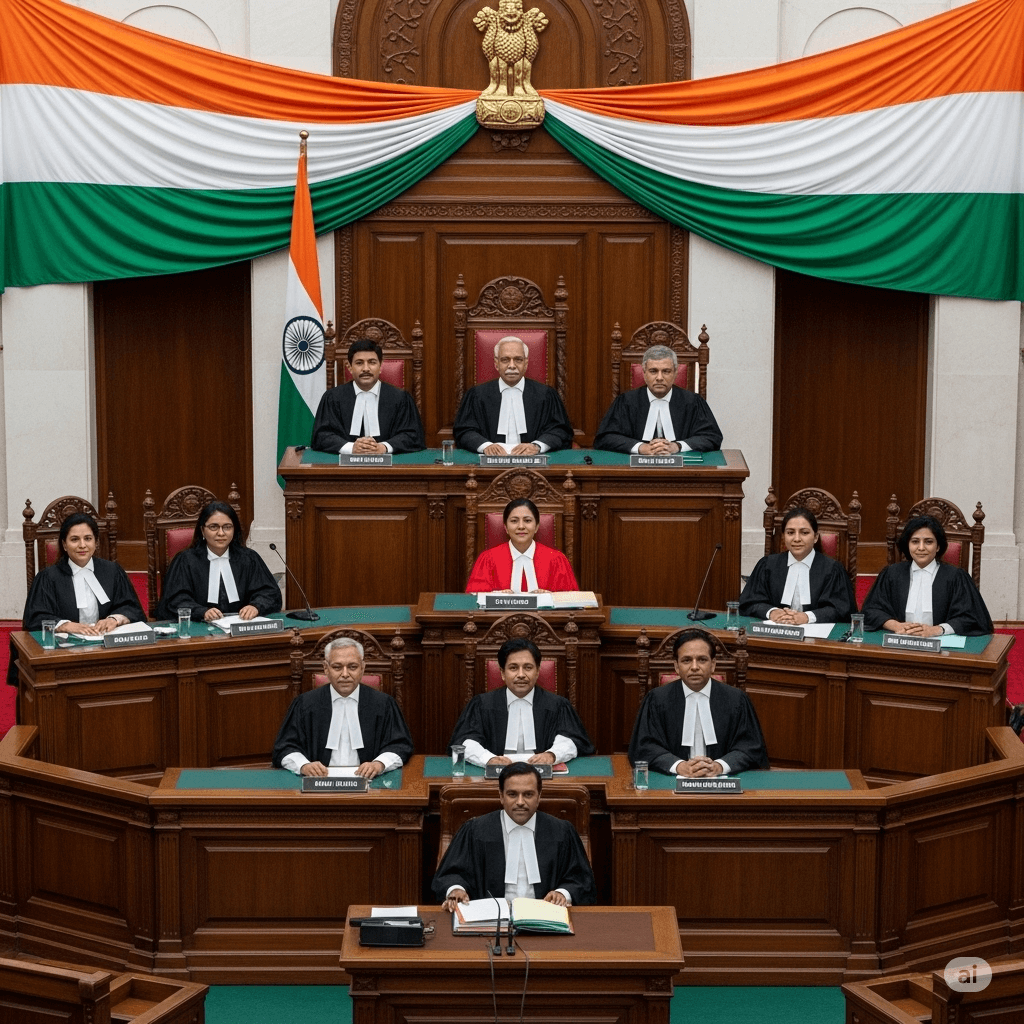
The Right to Information (RTI) Act, 2005, stands as a cornerstone of India’s democratic framework, empowering citizens to hold public authorities accountable and fostering transparency in governance. Enacted to promote an informed citizenry, curb corruption, and strengthen participatory democracy, the RTI Act operationalizes the fundamental right to freedom of speech and expression under Article 19(1)(a) of the Constitution, which the Supreme Court has consistently interpreted to include the right to know. This guide provides a detailed, section-by-section analysis of the RTI Act, integrates key judicial pronouncements and Central Information Commission (CIC) rulings, addresses common misconceptions, and offers practical insights for citizens to effectively utilize this transformative legislation. The RTI Act places citizens at the heart of governance, declaring them the ultimate owners of government-held information. Public authorities, as custodians of this information, are obligated to disclose it unless explicitly exempted under the Act’s narrowly defined provisions. Despite its transformative potential, challenges such as bureaucratic resistance, arbitrary denials, and lack of awareness persist. This article, aims to demystify the Act, clarify its provisions, and empower citizens to navigate its processes with confidence.
Purpose and Spirit of the RTI Act

The RTI Act, 2005, was enacted to foster transparency, accountability, and good governance by ensuring that citizens have access to information held by public authorities. Its preamble emphasizes creating an informed citizenry, promoting transparency in government operations, and containing corruption. The Act aligns with the constitutional guarantee under Article 19(1)(a), which encompasses the right to seek, receive, and impart information as an integral part of free speech.
The Supreme Court’s landmark judgment in State of UP vs. Raj Narain (1975) laid the foundation for this right, with Justice K.K. Mathew observing, “The people of this country have a right to know every public act, everything that is done in a public way by their public functionaries.”
This principle was reaffirmed in S.P. Gupta vs. Union of India (1981), where the Court held that the right to know is implicit in the right to free speech and expression, essential for democratic participation. The RTI Act embodies the principle that information is the rule and secrecy the exception. Public authorities hold information in trust for citizens, and any denial of access must be justified under specific exemptions outlined in the Act. By empowering citizens to question government actions, the RTI Act strengthens democracy and promotes accountability at all levels of governance.
Section-wise Explanation with Practical Insights

The RTI Act is structured to ensure accessibility, clarity, and enforceability. Below is a detailed breakdown of its key provisions, accompanied by practical insights and relevant case laws.
Section 3: Right to Information Provision:
Every citizen of India has the right to access information held by public authorities, which include government ministries, departments, public sector undertakings, local bodies, and even non-governmental organizations (NGOs) substantially financed by public funds. Practical Insight: The right is exclusive to Indian citizens, meaning foreigners cannot directly file RTI applications. However, they may access information indirectly through Indian associates. The definition of “public authority” is broad, covering entities like universities, hospitals, and NGOs receiving significant government funding.
Case Reference:

In CIC vs. Subhash Chandra Agrawal (2010), the CIC clarified that entities receiving substantial government funding, even if not directly controlled by the government, qualify as public authorities under the Act.
Section 4: Proactive Disclosure Provision:
Public authorities are mandated to voluntarily disclose information about their functions, decisions, budgets, rules, and procedures without requiring citizens to file RTI requests. This includes organizational charts, tender processes, recruitment rules, and policy decisions.
Practical Insight:
Many public authorities fail to comply fully with Section 4, forcing citizens to file RTIs for information that should be publicly available. Citizens can challenge such non-compliance by citing this section in their applications or appeals.
Case Reference:
In CBSE vs. Aditya Bandopadhyay (2011), the Supreme Court emphasized that proactive disclosure under Section 4 reduces the burden of RTI applications and promotes genuine transparency. The Court noted that public authorities must maintain and publish records in an accessible manner.
Section 5: Appointment of Public Information Officers (PIOs) Provision:
Every public authority must appoint Central Public Information Officers (CPIOs) or State Public Information Officers (SPIOs) to handle RTI requests. Under Section 5(4), PIOs can seek assistance from other officers, who are equally accountable for providing accurate information. Practical Insight: PIOs cannot refuse information on the grounds that it is held by another section or officer. If the requested information pertains to another department, the PIO must transfer the request under Section 6(3). Citizens should hold PIOs accountable for delays or refusals by citing this provision in appeals.
Section 6: Filing an RTI Application Provision:
Citizens can file RTI applications in writing (handwritten or typed) or electronically, accompanied by a nominal fee of ₹10 (waived for Below Poverty Line applicants). No reasons need to be provided for seeking information. If the application is sent to the wrong public authority, the PIO must transfer it to the correct authority within five days under Section 6(3).
Practical Insight:
Vague or overly broad queries often lead to incomplete or evasive responses. Applicants should frame specific, pointed questions to ensure clarity. For example, instead of asking, “Provide all information about a project,” specify, “Provide the budget, timeline, and contractor details for Project X.”
Section 7: Time Limits for Response Provision:
PIOs must respond within 30 days for standard requests, 48 hours for matters concerning life or liberty, and 35 days if the request is submitted through an Assistant PIO. Failure to respond within the stipulated time is deemed a denial, allowing the applicant to file an appeal.
Practical Insight:
Applicants should track deadlines meticulously and file appeals promptly if no response is received. Citing Section 7(1) in appeals strengthens the case for timely disclosure.
Section 8: Exemptions from Disclosure Provision:
Information may be withheld only under specific exemptions, such as national security, trade secrets, fiduciary relationships, or unwarranted invasion of privacy. However, information related to corruption or human rights violations cannot be denied under these exemptions. The burden of proof lies with the PIO to justify denial under Section 8(1).
Practical Insight:
PIOs often misuse Section 8 to deny information arbitrarily, citing vague reasons like “sub judice” or “ongoing investigation.” Applicants should challenge such denials by demanding specific justifications and referencing relevant case laws.
Case Reference:
In CBSE vs. Aditya Bandopadhyay (2011), the Supreme Court clarified that exemptions must be narrowly construed, and PIOs cannot withhold information unless it clearly falls under Section 8(1). The Court also ruled that “sub judice” is not a valid ground for denial unless a specific court order prohibits disclosure.
Section 11: Third Party Information Provision:
When an RTI request involves information related to a third party, the PIO must notify the third party, invite objections, and consider them before deciding on disclosure. The PIO must balance public interest against potential harm to the third party, and objections do not constitute an absolute veto.
Practical Insight:
PIOs often cite third-party objections to deny information without following due process. Applicants should insist that the PIO adheres to Section 11 procedures and justifies any denial under Section 8(1).
CIC Rulings:
In CIC Decision No. 2017/123456 (2017), the CIC ruled that third-party objections do not automatically exempt information from disclosure. The PIO must independently assess whether Section 8(1) applies.
In CIC Decision No. 2023/789012 (2023), the CIC imposed penalties on a PIO for denying information solely based on third-party objections without following Section 11 procedures. In corruption-related cases, the CIC has consistently prioritized public interest, ordering disclosure even when third parties objected.
Section 19: Appeals Process Provision:
If an applicant is dissatisfied with the PIO’s response (or lack thereof), they can file a first appeal within 30 days to the First Appellate Authority (FAA), a senior officer in the same department. If the FAA’s decision is unsatisfactory, a second appeal can be filed with the Central or State Information Commission within 90 days.
Practical Insight:
Appeals should cite specific provisions of the Act, relevant case laws, and CIC precedents to strengthen the case. Applicants should also demand written reasons for any denial, as required under the Act.
Case Reference:
In Kundan Shrawan Humane vs. M.B. Rao (CIC, 2019), the CIC ruled that PIOs must provide reasoned orders for denials, and failure to do so constitutes a violation of the Act.
Section 20: Penalties for Non-Compliance Provision:
The Information Commission can impose penalties of ₹250 per day (up to ₹25,000) on PIOs for unreasonable delays, false information, or mala fide denials. The Commission may also recommend disciplinary action against erring officials.
Practical Insight:
Citing Section 20 in appeals can pressure PIOs to comply with the Act. Applicants should document all communications and timelines to support penalty claims.
CIC Rulings: In multiple cases (e.g., CIC Decision No. 2022/456789), the CIC imposed penalties on PIOs for arbitrary denials, failure to follow Section 11 procedures, and delays beyond the statutory timeline.
Key Judicial Pronouncements and CIC Decisions

The judiciary and the CIC have played a pivotal role in interpreting and enforcing the RTI Act. Below are key judgments and rulings that shape its application:
State of UP vs. Raj Narain (1975):
The Supreme Court established the right to know as a fundamental aspect of free speech, stating that citizens have a right to know about public acts and the functioning of their officials.
S.P. Gupta vs. Union of India (1981):
The Court reiterated that transparency in governance is essential for democracy, and the right to information is a prerequisite for informed public participation.
CBSE vs. Aditya Bandopadhyay (2011):
The Supreme Court clarified that exemptions under Section 8 must be strictly interpreted. It ruled that information cannot be denied on grounds like “sub judice” unless a court explicitly prohibits disclosure. The Court also emphasized the importance of proactive disclosure under Section 4.
CIC Decisions on Third-Party Information (2017–2025):
The CIC has consistently overruled arbitrary denials based on third-party objections, emphasizing that: PIOs must follow Section 11 procedures and independently assess public interest. Denials citing “ongoing investigation” or “third complaint” are invalid unless specific harm under Section 8(1)(h) is proven. Compensation has been awarded to applicants for wrongful denials, and penalties imposed on erring PIOs.
Kundan Shrawan Humane vs. M.B. Rao (CIC, 2019):
The CIC held that PIOs must provide reasoned orders for denying information, and vague references to exemptions are unacceptable.
CIC Rulings on Corruption Cases (2020–2025):
In cases involving allegations of corruption, the CIC has prioritized public interest, ordering disclosure even when investigations are pending, provided no specific harm is demonstrated. Common Misuses of Exemptions and How to Counter Them PIOs often misuse exemptions under Section 8 to deny information.
Below are common excuses and how to challenge them:
· “Sub judice” Cases:
PIOs may claim that information cannot be disclosed because a case is pending in court.
· Counter:
Cite CBSE vs. Aditya Bandopadhyay (2011), which clarifies that “sub judice” is not a valid exemption unless a specific court order prohibits disclosure.
· Ongoing Investigation:
PIOs may argue that disclosure would impede an investigation.
Counter:
Demand proof of concrete harm under Section 8(1)(h). CIC rulings consistently hold that ongoing investigations do not automatically exempt information.
· Third-Party Objections:
PIOs may deny information citing third-party refusal.
Counter:
Insist on compliance with Section 11 procedures. The CIC has ruled that third-party objections are not a veto, and PIOs must assess public interest.
· “Not My Department”:
PIOs may refuse information, claiming it belongs to another department.
Counter: Cite Section 6(3), which mandates transfer of the request within five days.
· No Response or Delay:
If the PIO fails to respond within 30 days, it is deemed a denial.
Counter:
File a first appeal under Section 19(1), citing Section 7(1) and Section 20 for potential penalties.
Practical Tips for RTI Users To maximize the effectiveness of RTI applications, citizens should adopt the following strategies:
Draft Clear and Specific Queries:
Avoid vague or broad questions. For example, instead of “Provide details of all projects,” ask, “Provide the budget, timeline, and contractor details for Project X initiated in 2023.”
Cite Relevant Sections and Case Laws:
Refer to specific provisions (e.g., Section 6(3) for transfers, Section 8 for exemptions) and landmark judgments like CBSE vs. Aditya Bandopadhyay to strengthen your application or appeal.
Track Deadlines: Maintain a record of application submission dates and response deadlines (30 days for standard cases, 48 hours for life or liberty). File appeals promptly if deadlines are missed.
Demand Written Reasons for Denial:
PIOs must provide reasoned orders for denying information. Challenge vague or unjustified denials in appeals.
Use CIC Precedents:
Reference recent CIC rulings, especially on third-party information, ongoing investigations, and corruption cases, to bolster your case.
Keep Copies of All Communications:
Maintain records of your RTI application, fee receipt, PIO response, and appeal submissions for evidence in case of second appeals.
File Appeals Strategically:
In first and second appeals, clearly outline the PIO’s failure to comply with the Act, cite relevant sections, and request penalties under Section 20 if applicable.
Sample RTI Application
To,
The Public Information Officer,
[Department/Office Name],
[Address]
Subject: Application under Section 6(1) of the RTI Act, 2005
Sir/Madam,
1. Kindly provide the following information under the Right to Information Act, 2005:
2. Certified copies of the tender documents for [specific project] awarded in [year].
3. Details of the budget allocated and expenditure incurred on [specific project] as of [date].
4. As per Section 6(2), I am not required to provide reasons for seeking this information. I have enclosed the prescribed application fee of ₹10 (Indian Postal Order No. [number]).
5. Kindly provide the information within 30 days as mandated under Section 7(1).
Yours faithfully,
[Full Name]
[Address]
[Contact Number/Email]
Sample First Appeal
To,
The First Appellate Authority,
[Department/Office Name],
[Address]
Subject: First Appeal under Section 19(1) of the RTI Act, 2005
Sir/Madam,
1. I filed an RTI application on [date], received by your office on [date] (copy enclosed).
2. The PIO has [not responded/denied information] without providing adequate reasons, in violation of the RTI Act.
3. Grounds for Appeal: The PIO failed to justify the denial under any specific exemption in Section 8(1). The mandatory procedure under Section 11 for third-party information was not followed, as required by CIC rulings (e.g., CIC Decision No. 2017/123456). As per CBSE vs. Aditya Bandopadhyay (2011), “sub judice” or “ongoing investigation” is not a valid ground for denial unless specific harm is proven.
4. I request you to direct the PIO to provide the requested information within 15 days and consider imposing penalties under Section 20 for non-compliance.
Yours faithfully,
[Full Name]
[Address]
[Contact Number/Email]
Quick Reference Flowchart
File RTI Application → PIO responds within 30 days (48 hours for life/liberty cases)?
Yes: Verify if the information provided is complete and accurate.
No/Denied: Proceed to First Appeal.
First Appeal (within 30 days) → Filed with the First Appellate Authority. If resolved, information provided. If unresolved, proceed to Second Appeal.
Second Appeal (within 90 days) → Filed with the Central/State Information Commission. CIC/SIC can order disclosure, impose penalties (Section 20), or award compensation for wrongful denials.
Conclusion
The Right to Information Act, 2005, is a powerful instrument for empowering citizens, promoting transparency, and combating corruption. By codifying the right to know, it ensures that public authorities remain accountable to the people they serve. However, its effectiveness depends on citizens’ ability to navigate its provisions, challenge wrongful denials, and leverage judicial and CIC precedents.
Key takeaways include: Information is the rule, and secrecy is the exception, as reinforced by State of UP vs. Raj Narain (1975) and CBSE vs. Aditya Bandopadhyay (2011). Arbitrary denials citing “sub judice,” “ongoing investigation,” or “third-party objections” are invalid unless justified under Section 8(1). The CIC has consistently prioritized public interest in corruption cases, ordering disclosure and penalizing erring PIOs. Citizens must draft precise applications, track deadlines, and use appeals strategically to enforce their rights. By understanding the RTI Act’s provisions, citing relevant case laws, and persisting through appeals, citizens can ensure that transparency prevails over bureaucratic secrecy. The RTI Act is not just a law—it is a tool for democratic empowerment, placing the power of information in the hands of the people.


A comprehensive guide for the common public & the PIOs who are supposed to share information. It will go a long way in helping to bring transparency in the complete executive run through various public offices
Recent news papers have reported severe crisis in Central Information Commission due to massive backlog of over 26,000 cases in the wake of Public information officers and first appellate authorities of government departments rejecting RTI requests by their own arbitrary interpretation and/ or misusing exemptions in the RTI Act. Specifically, such a practice has invaded Section 4(1)(d) of RTI Act that mandate public authorities providing reasons for their administrative or quasi-judicial decisions to the persons affected by those decisions. The deliberate practice being to frustrate honest individuals targeted for exposing wrong vengeful actions of misuse of office .